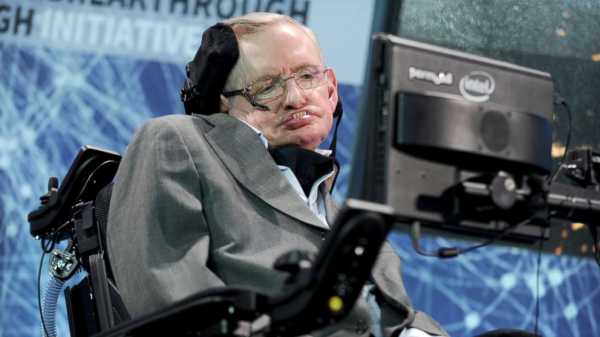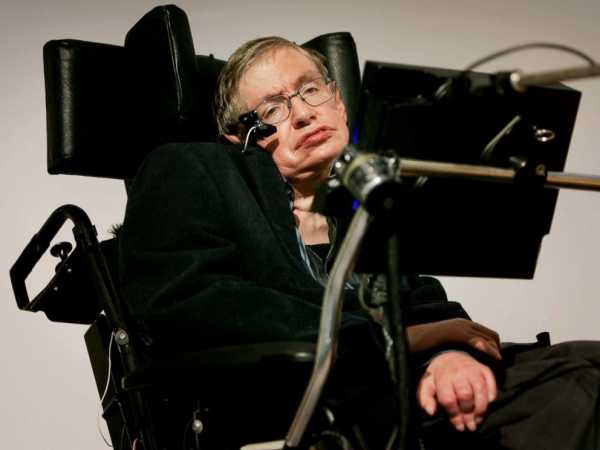
He was also a symbol of triumph over physical adversity, since he did this work while also fighting a debilitating disorder called amyotrophic lateral sclerosis, or ALS, that attacked his muscle function and ultimately left him confined to a wheelchair, with little independent movement.
According to his official website, “In 1963, Hawking contracted motor neuron disease and was given two years to live.” He died on Wednesday, 55 years later, at the age of 76.

Bruno Vincent/Getty ImagesProfessor Stephen Hawking delivers his speech at the release of the “Bulletin of the Atomic Scientists,” Jan. 17, 2007, in London.
ALS is commonly called Lou Gehrig’s disease after the star New York Yankees player who died from the disease at the age of 37, in 1941.
Here is more information about the disease.
What is ALS?
ALS stands for amyotrophic lateral sclerosis. It is a disease that damages the nerve cells that control muscles. The exact cause of ALS is unknown and remains an active area of research.
There are two main forms of ALS: familial, when there is a known history of ALS occurring in the family, and sporadic, when there is no known family history. Researchers have found a number of inherited factors that can lead to familial ALS.
The viral “ALS Challenge” when everyone was dumping buckets of ice water on their heads a couple of years ago was a fundraiser, which contributed to the research now under way.
What are the symptoms of ALS?
Over time, this nerve cell damage causes the cells to die. The main symptoms include weak arm or leg muscles, muscle twitches and slowness, and difficulty with speech and swallowing.
As the nerve cells lose function and the muscles become weaker, the muscles eventually stop working and paralysis follows. The brain is entirely unaffected; Stephen Hawking continued to be a brilliant physicist, even with later stages of the disease. The main cause of death in people with ALS is when the muscles that help with breathing become paralyzed.
Who gets ALS?
In the United States, an estimated 5,000 people a year are diagnosed with ALS, usually between the ages of 55 and 75 years old. Reports of up to 30,000 people are affected now. ALS occurs more commonly in men than women.
How is ALS diagnosed?
ALS can be diagnosed based on symptoms that continue to progress. One test, an electromyography, or EMG, can measure how well the nerve and muscle cells work. An MRI scan can also see pictures of the brain and spinal cord to look for evidence of the disease. Blood tests and spinal tap studies can also be done to rule out an alternate diagnosis.
What are the treatments for ALS?
While there is no cure for ALS, treatments exist to help minimize the symptoms. Medications called riluzole or edaravone work by slowing down the progression of the disease, often helping people live a few months longer.
Other medications used include ones to help with twitches and muscle spasms, muscle weakness, drooling and sleep problems. Many patients eventually require help with walking, eventually needing a wheelchair, a feeding tube because of difficulty swallowing and breathing support.
How long can people live with ALS?
Many people diagnosed with ALS are older than 50 and the life exectancy is about three to five years following the diagnosis. However, some patients diagnosed as teenagers were shown to survive into their 60s.
Research supports that the earlier the diagnosis of ALS, the longer these patients tend to live.
Hawkings was an ambassador for people with ALS, showing that life expectancy can be longer and the disease spares the mind. Since the exact cause of ALS is unknown, scientists suggest that his particular form of ALS is unique.
The exceptional care and support Hawkings received from his family, students and multiple foundations, which eventually funded his required 24-hour nursing care, also likely helped him live longer and cope with the disease.
Sourse: abcnews.go.com






